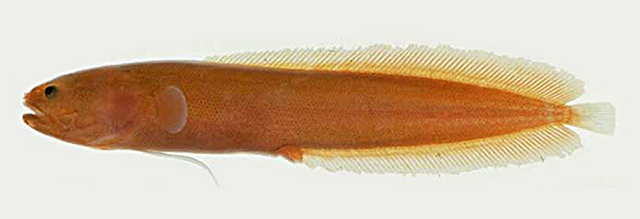| Dinematichthyidae (Viviparous brotula) |
| 5.1 cm SL (male/unsexed); 6.6 cm SL (female) |
|
reef-associated; marine |
| Indo-West Pacific: Australia. |
|
Dorsal soft rays (total): 78-97; Anal soft rays: 57-73; Vertebrae: 40-45. This species is distinguished by the following characters: D 78-97; A 57-73, V in D 2.2-2.6; vertebrae 12-13+28-32=40-45; one (outer) pseudoclasper wing-shaped with 2 slender,
straight supporters, the posterior one is slightly longer and thicker than anterior one; straight penis; 4-6 rows of scales on upper part of cheek, 0-2 rows on lower part; anterior tip of otolith rounded, otolith with undivided long sulcus, its centre anterior of centre of otolith, not inclined, otolith length to height, 2.2-2.3, otolith length to sulcus length, 1.9-2.1 (Ref. 76869). |
| Common species found on shallow reefs (Ref. 34024). Most common in inshore and back reef environments, associated with crevices of silty coralline rock. Female specimens with unusually low numbers of large embryos, 1-3, usually 2). One female (3.2 cm SL) contained one embryo (1.4 cm SL in length) This is among the lowest degree of fecundity observed in tribe Dinematichthyini. (Ref. 76869). |
|
Least Concern (LC); Date assessed: 16 August 2019 Ref. (130435)
|
| harmless |
Source and more info: www.fishbase.org. For personal, classroom, and other internal use only. Not for publication.
